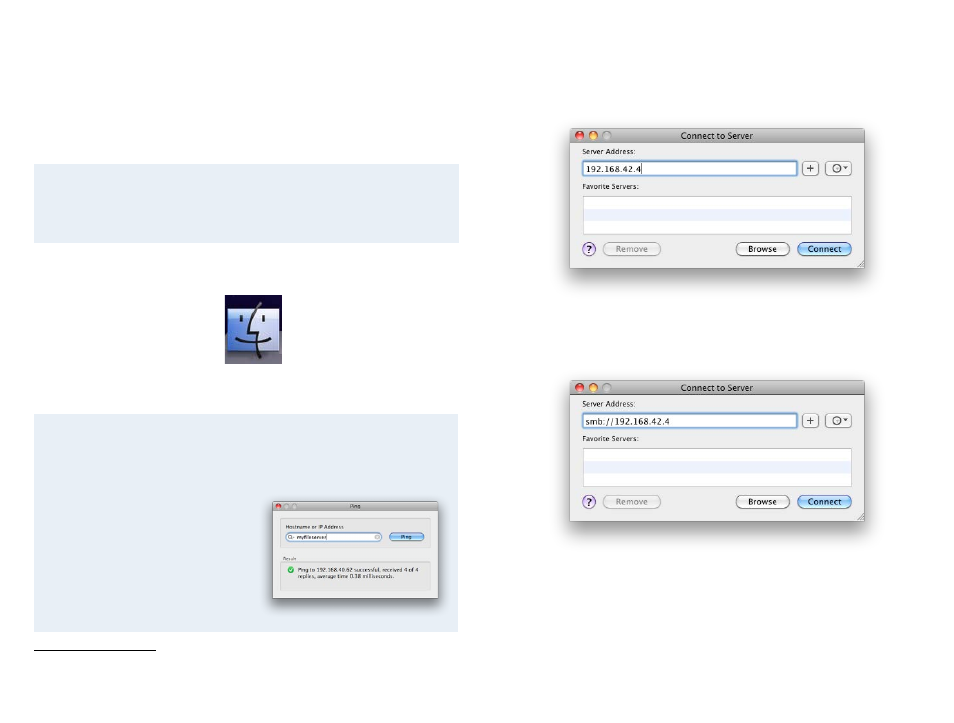Accessing files, printers and databases over vpn, Access, Ing files, printers and databases has mor – equinux VPN Tracker 6.4.6 User Manual
Page 64: Using finder to connect to file servers

Accessing Files, Printers and
Databases over VPN
Using Finder to Connect to File Servers
Secure Desktop or Finder? Your Choice!
The new Secure Desktop in VPN Tracker 6 lets you connect to file servers
right from within VPN Tracker. However, if you wish, you can still use the
Finder to connect to your file servers.
To connect to your server or file share:
‣ Switch to Finder by clicking its icon in the Dock
‣ Choose Go > Connect to Server from the menu bar on top of your screen.
You can also use the keyboard shortcut ⌘-K
I don’t know my file server’s IP address. Can’t I just access my file servers
via the Finder Sidebar?
For technical reasons, when using a VPN connection, your servers won’t
show up in the Finder sidebar. If you don’t have your file server’s IP address,
you can easily find it out next time you’re
in your office network:
Open Tools > Ping Host and enter your
file server’s name. After a few seconds,
VPN Tracker should tell you the file
server’s IP address. Again, this will only
work when you’re actually in your office
network, not if you’re connect via VPN.
The following steps depend on the kind of server you’re connecting to.
To connect to a Mac (AFP) server:
‣ Type the IP address (e.g. 192.168.42.4)
of your server and click “Connect”
To connect to a Windows (SMB) server:
‣ Type “smb://” followed by the IP address (e.g. 192.168.42.4)
1
of your server
and click “Connect”
Afterwards, you may need to enter your username and password to access
the server.
64
1 If your VPN connection uses remote DNS, you can also use a DNS host name instead of an IP address.
